Wonders of Our World #4: The Delta and Zuiderzee Works
Taking a moment to appreciate the worlds largest ever hydraulic engineering project
There is a famous saying: “God may have created the earth, but the Dutch created the Netherlands” and indeed, over 65% of the country’s land area would be underwater were it not for an intricate and extensive network of flood protection and coastal resilience infrastructure that keep the watery depths at bay. Monuments to mankind’s ingenious ability to create a place for himself amongst the chaos of nature stand no taller than the Delta and Zuiderzee works, the first of which functions mainly as flood protection and to shorten the length of exposed coastline, while the second is focused on land reclamation efforts. The Deltaworks is a series of construction projects, including dams, dykes, locks, and levees, serving to stop seawater from flooding up through the Dutch estuary mouths.
Since construction began in earnest after the North Sea Flood disaster in the mid 1950s, Deltaworks has expanded to block off the estuary mouths of Ooster schelde (see above), the Haringvliet, and the Grevlingen, reducing the length of exposed coastline by 430 miles. To maintain shipping lanes to Rotterdam and Antwerp, the mouths of the Nieuwe Waterweg and Westerschelde estuaries were kept open, and had their protective measures reinforced along their exposed coasts.
The Zuiderzee works have reclaimed 620 square miles of land from the sea, and have created many more miles of transitional wetlands that serve as key ecological buffer zones, tourist attractions, and wildlife habitats. Outlined in red below are the Markerwaarddijk and Afsluitdijk, two key dykes in the Zuiderzee Works that separate the Markermeer and Ijsselmeer lakes, which have become progressively less salty over time, transitioning to almost entirely fresh water lakes since their separation from the sea in 1932.
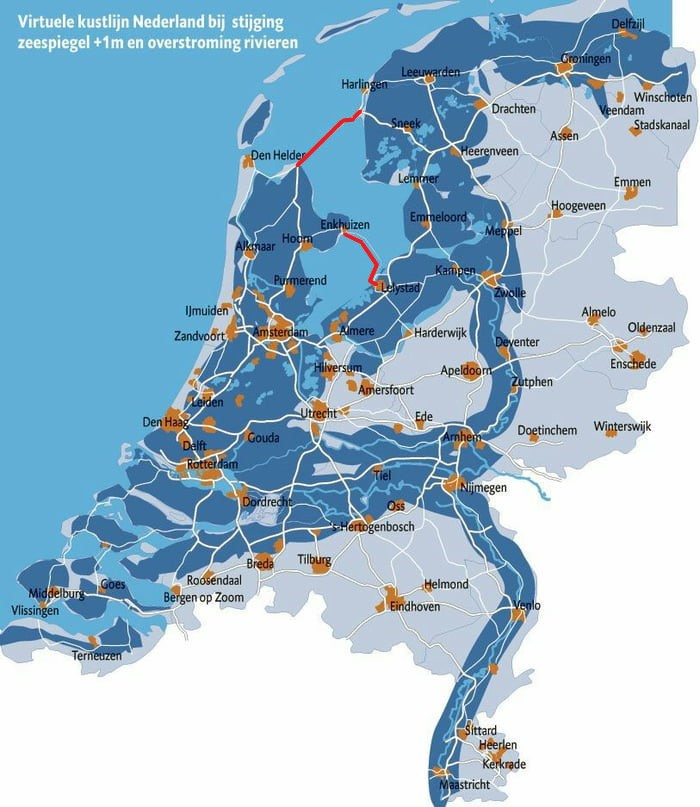
Google maps makes apparent the difference in land use between the man made polders and the much greener surrounding areas (shown below) this is because the large polders are mostly used for agriculture and low density housing, and don’t host urban environments with the exception of the city of Almere in the lower left corner of the Flevoland polder, which is still relatively sparse compared to the density of many Dutch cities.
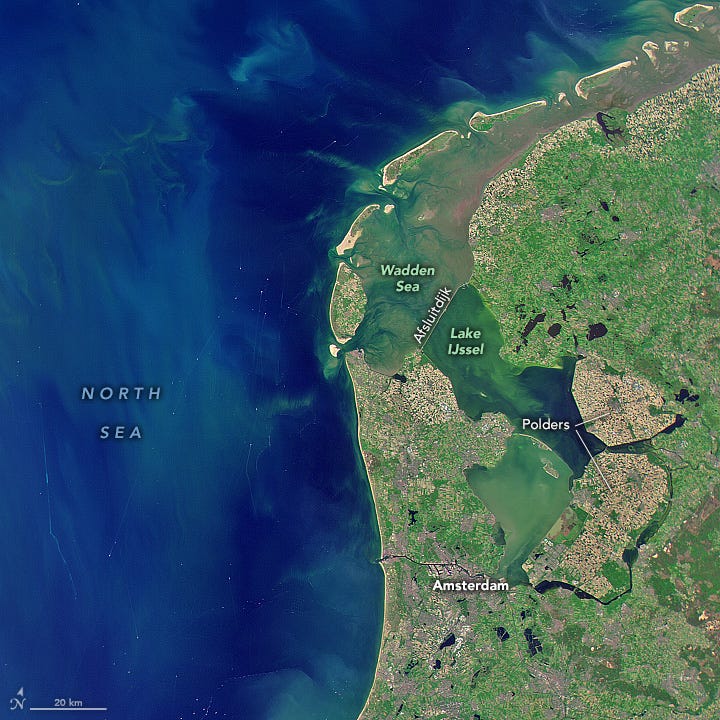
Despite its picturesque tulip fields and jubilantly spinning windmills, the existence of the Netherlands balances on a tightrope. And with 600 million people living 10m or less above sea level worldwide, it won’t just be the Dutch who need to practice this balancing act. From London to Los Angeles, our great coastal cities are under threat. But fear not! This is not a doomer-post. There are solutions at hand, and today, we’ll be examining some of the most interesting options we have to protect our cities.
One of the most interesting methods of flood protection has been in the domain of land reclamation. With a surprisingly long history, land reclamation is the process of raising the level of the seabed in an area to the point that it begins to crest above the waves, and gives birth to new land, upon which we can build and live. However, we haven’t always been the best at this process, and much of the land reclaimed in the past has functioned more as a buffer area between the sea and existing buildings and infrastructure than as a place where we can effectively build. This is great for protecting our existing cities, but land reclamation is probably not a cost effective way to expand them. Why? Because it’s hard to compact that soil to a stable state and keep it there. Building is hard on a swamp, and can be even harder on a landfill site that hasn’t had enough time to settle under its own weight, or one where the soil has voids previously filled by water. In an upcoming post, we’ll take a deeper dive on the subject of settlement and subsidence and why it plagues heavy projects built on reclaimed land. What this reclaimed land is best for, and what the Netherlands primarily uses it for, is agriculture and low density-housing.
Although the Netherlands is conventionally known as a dense urban utopia, you may be surprised to know that it punches above its weight in terms of agricultural productivity, and ranks as the world’s second largest agricultural exporter after the United States. Until 1967, the Dutch land reclamation efforts ballooned the total amount of land used for agriculture in the Netherlands. While this agricultural land has slowly been transitioning to suburbs and nature preserves, this trend has happened largely around the cities, and many of the reclaimed areas are still hubs of agriculture. The map below shows how reclaimed land makes up a large portion of the arable cropland in the Netherlands, even as the country transitions to less land intensive agriculture like greenhouse farming.
None of the bounty that this reclaimed and protected land has provided for the people who live on it would be available if not for the monumental infrastructure projects that are the Delta and Zuiderzee works. Although the Netherlands is a small country, it is a future facing one, that has led the way in hydraulic engineering projects for almost a thousand years, and serves as an important beacon of light among the dark cloud of doom that often accompanies talk of sea level rise. The Delta and Zuiderzee works are a case study in the potential of mankind to change their surroundings for the better and exercise agency over nature. For these reasons, I dub the Delta and Zuiderzee works as #4 in my world wonders list. Stay tuned as we count up the list in upcoming posts, and comment below what world wonders you think should make the list!
-Connor, OfAllTrades.
Like this article? Please Subscribe!
Know someone who would? Please Share!
And if any of you readers out there are secretly crypto millionaires and would like to leave a tip, please check out https://alltrades.eth.xyz/


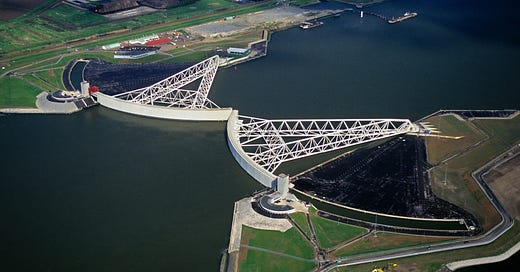


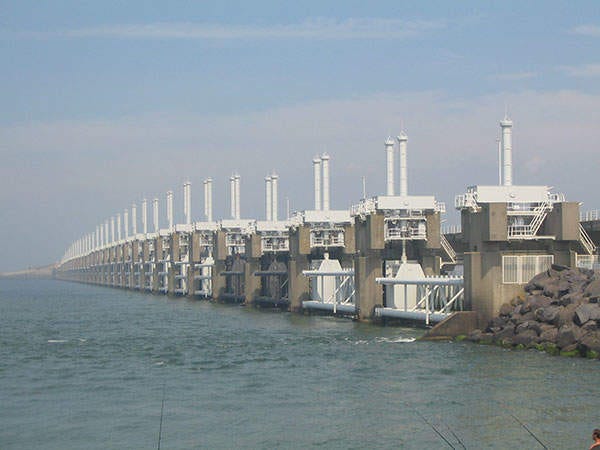


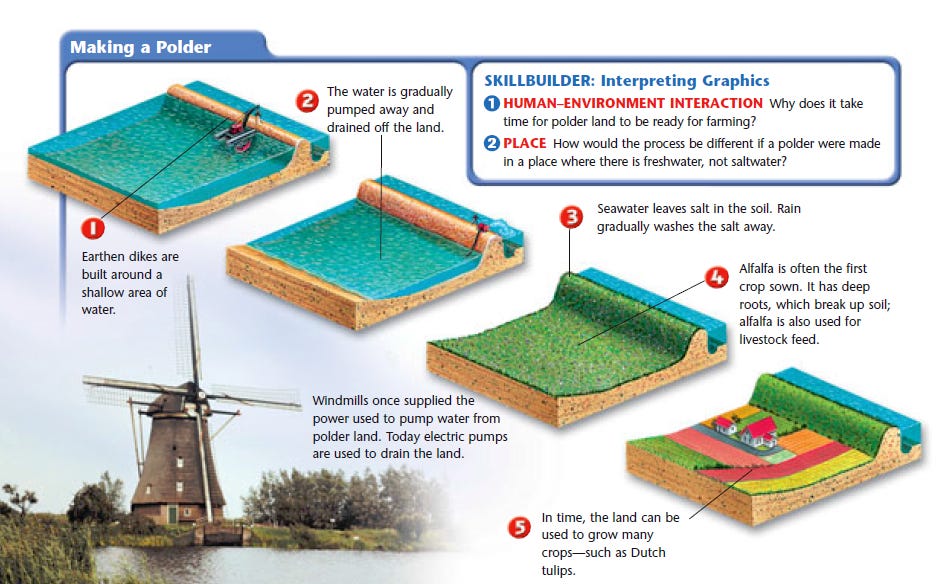

Great post! You might be interested in my blogpost about Dutch culture, esp. regarding the Polder model.
https://henkb.substack.com/p/wooden-shoes-and-marihuana
*Haringvliet* = "herring stream." Otherwise great.